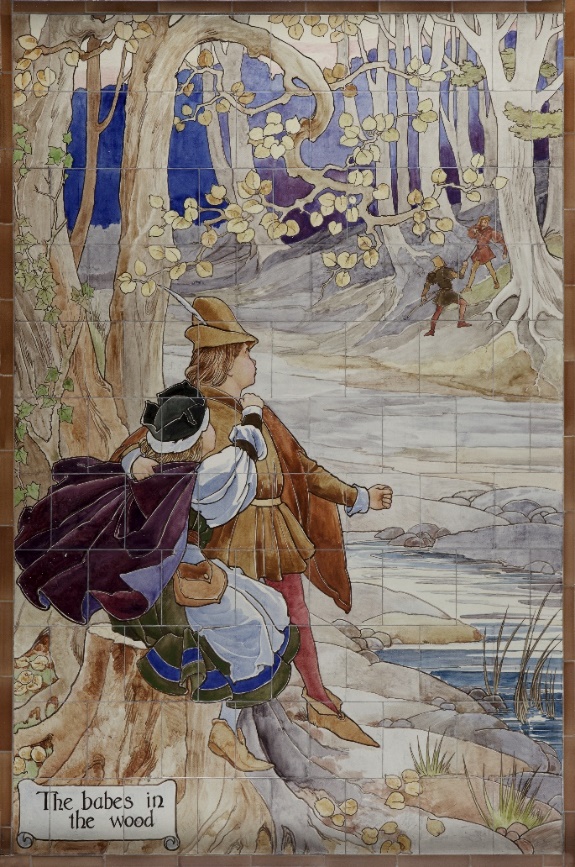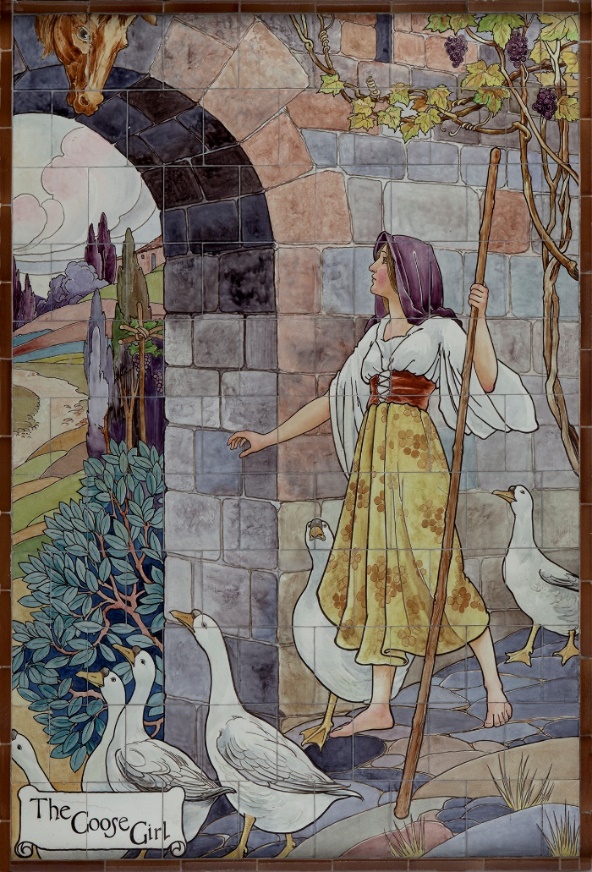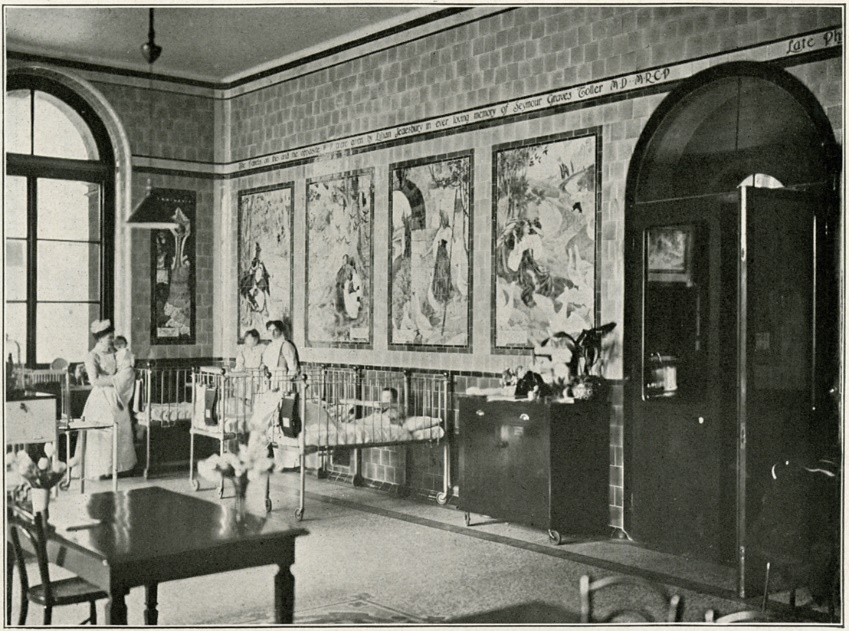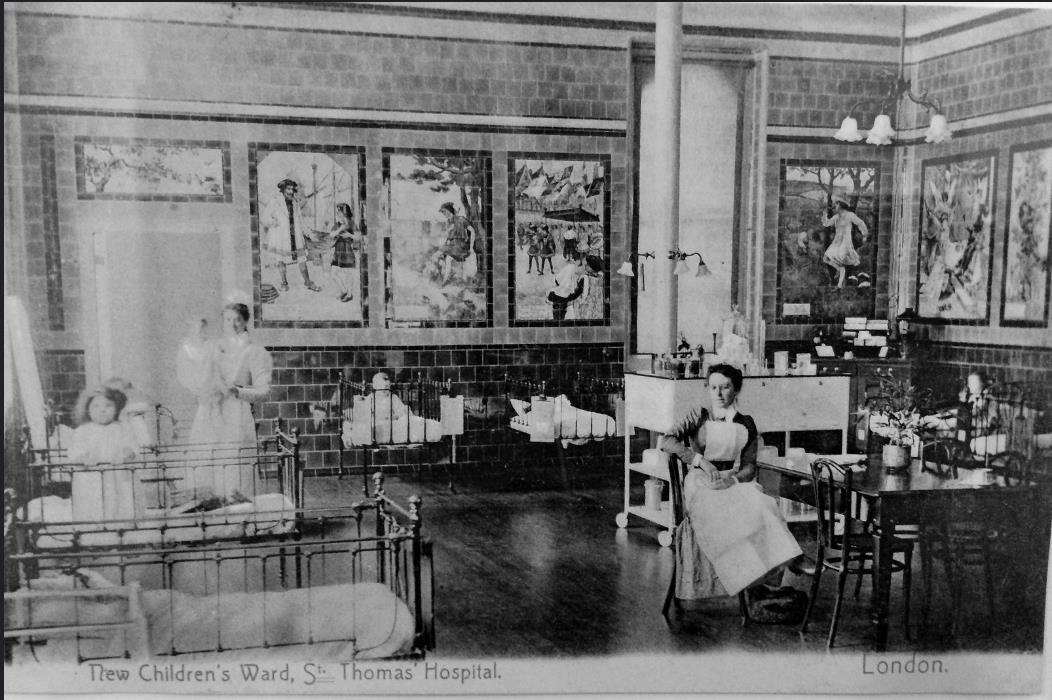Newsletter

Fig. 1 - Babes in the Wood, by Doulton and Company, 1903, glazed painted tiles. 5’ 11” H x 3’ 11” W. American Craftsman Museum collection.
Charming, magical, and mysterious, fairy tales and nursery rhymes are powerful stories combined with moral lessons. Such stories – told through words, songs, or visual art – have enticed audiences across generations for centuries. The young and young at heart will be enchanted by the fascinating tales to be displayed in the Children’s Gallery at the Museum of the American Arts and Crafts Movement.
At the entrance to the gallery will be two glazed tile murals illustrating an English nursery rhyme Babes in the Wood and the Brothers Grimm fairy tale The Goose Girl. Both were made in 1903 by Doulton and Company of London, more commonly known as Royal Doulton, for children’s wards at London’s St. Thomas’ Hospital. Each nearly six-foot-tall mural was made of 88 terracotta tiles, hand painted by Doulton’s decorators William Rowe and Margaret Thompson.
The nursery rhyme Babes in the Wood tells the tale of two children who were sent to their uncle after their parents died. Wanting their riches, the uncle hired two men to take the children into the woods and kill them. The mural (Fig. 1) shows the children in the foreground, watching the two men fighting over whether they should continue with their assigned task. The man that won refused to kill the children, but the story took a dark turn when they wandered off and died in the forest anyway. The uncle was punished for his evil deeds by losing everything and going to prison.

Fig. 2 - The Goose Girl, by Doulton and Company, 1903, glazed painted tiles. 5’ 11” H x 3’ 11” W. American Craftsman Museum collection.
In The Goose Girl, a princess travels on a long journey to meet her betrothed, with her maid-in-waiting and her trusted talking horse. Along the way, the maid decided to take the princess’s place and threatened to kill her if she ever told a living soul. Upon arrival at the kingdom, the fake princess killed the talking horse, and the true princess was forced to assist a young goose herder. In the mural, the princess and her geese walk toward an archway, where her horse’s head hangs (Fig. 2). According to the tale, the horse continued to speak to her after death. The king was alerted and asked for her story, but true to her word, the princess remained silent. He then asked her to tell the stove in the kitchen, since it was not a “living soul.” She told her story and the king heard everything through the pipes. The tale ends with the princess and prince happily married and the maid punished with death.
These two tile murals were commissioned with other fairy tale and nursery rhyme subjects for two children’s wards in St. Thomas’ Hospital (Figs. 3 & 4). The stories both distracted and amused the young patients. Bordered by dark green tiles, they brought a cheerful array of bright colors to the hospital. Tiles were also considered suitable decorations for hygienic hospital environments, because the glossy glazes allowed for easy cleaning.
The Doulton murals at St. Thomas’ Hospital were removed when the wings were demolished in 1968. A few were restored in 2008 and rehung in the hospital, but others were lost or damaged. Babes in the Wood and The Goose Girl will continue to captivate young viewers when the Museum of American Arts and Crafts Movement opens this year.

